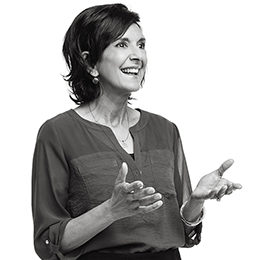The Power of Trust in Improving Loyalty

In a low-trust culture, loyalty goes away.
Given the current social, economic, and cultural reality of today, the employment marketplace favors the employee over the employer. Right now, all around the world, highly talented people at great organizations are scoping out alternatives, looking past their current gig, and imagining the next one. They have the flexibility to interview and, in many cases, to work remotely. They know that, on balance, they would be more valued elsewhere.
Why is that? And what can executives and managers do to stem the tide of defections?
The answers revolve around trust. Leaders need to ask themselves how they are demonstrating their trust to people so that employees never want to quietly quit, or feel they need to look elsewhere, because their workplace is where they feel most respected, included, and valued. That type of environment fosters deep loyalty, and the best ways to increase that loyalty are by genuinely trusting, caring about, and inspiring employees.
Loyalty is an amplification of the level of trust inside an organization. Loyalty is much more than satisfaction. Loyalty is an employee saying, “I’m willing to recommend you.”
How many employees act as the organization’s best recruiters because they operate in a trusted and trusting workplace? If not, people vote with their feet. Employees will look for leaders who they think will care, and they’ll be loyal to people who are loyal to them.
Why is this so important—and timely—for leaders? Consider these five powerful forces that have changed:
- The nature of the world: Consider our technology, the pace of change, and the amount and type of change.
- The nature of work: This is the age of collaboration, of interaction.
- The nature of the workplace: This has changed nearly at the speed of light, considering work from home, hybrid work, distributed teams, etc.
- The nature of the workforce: Employers recognize the imperatives of diversity, multigenerational teams, and more.
- The nature of choice: There are now infinite choices that employers must address.
All of this change drives the need for a high-trust culture that inspires people. That is the formula that can attract, retain, and engage the best people—and bring out the best in people—to win in the workplace.
If that environment doesn’t already exist, pushing in that direction is key, but change won’t happen overnight. If leaders haven’t been caring in the past and weren’t interested in the teams with whom they work, employees might think a leader is under a magic spell if they’re suddenly interested in them. It might take a while for a leader to understand what they most care about and why. Leaders can ask themselves, “How do I show that I know—or want to learn—what their biggest concerns and hopes are, and how can I demonstrate that regularly?”
The Most Trusted Leadership Company
Learn how your organization can use our people, content, and technology to create collective action and meaningful change.

As with any journey, the first steps will likely be the hardest. But people are looking for personal connections. They want to work in a place where they cannot just be trustworthy individuals, but they want to be trusted. If leaders can learn to trust better, convey their trust to others better, and demonstrate their caring nature to their people better, then they will have much deeper loyalty from their teams because they’re feeling more loyal to them.
Loyalty extends beyond employee retention and encompasses customer loyalty. Customers are quick to detect disloyalty within organizations, and the level of trust among employees directly influences customer loyalty. When employees are disengaged or dissatisfied due to a lack of trust, it often manifests in their interactions with customers.
Before you can begin to build loyalty, it helps to put yourself in a team member’s shoes. Why do some of them have their eyes on new opportunities? Because they believe they’re capped out at their current jobs—not only on how much money they can make, but on how much they can learn and excel. They are maxed out on personal growth and managed by leaders who are inspirationally bankrupt. Bottom line: They cannot grow where they are.
Indeed, this is precisely what a prominent 2022 study by McKinsey found, underscoring conclusions that employees saw insufficient opportunity for growth and career development, and were frustrated by uninspiring leaders. The study added that flexibility—a vital part of a trusting environment—was a top motivator and reason for staying.
Talented employees regularly say that what they are looking for is a place where they not only can have their voice heard, but they can find their voice. Too often, they are not finding it because their employer has restrained them.
To understand why these restraints exist, it’s important to understand the relationship between trust and growth. Organizations can grow without ample trust, but the culture of low trust will never be able to sustain growth in the long term. In a low-trust culture, loyalty goes away, and with it the commitment of employees to drive the best results.
How can leaders engender this needed loyalty through trust?
Start by giving credit. And not just giving credit where it is due. If that phrase sounds like a judgment, it’s because it is. To give credit abundantly is to affirm the value of an individual’s contribution and define an environment in which employees feel encouraged to be innovative and collaborative, which helps them shine. In addition, they freely share ideas, creating what can be regarded as a geometric trust multiplier.
As always, what is lost in an environment lacking in trust and loyalty is speed and cost. Even if the best employees on a team find themselves looking for opportunities at a time when they have been told the market for their services is not at its best, just the act of them looking elsewhere reduces the speed of everything. This in turn costs both time and the loss of potential innovations that could have come from a fully trusting, loyal, and engaged workforce.
Showing loyalty creates its own rewards. Employees who feel recognized will feel energized. Employees who feel their best ideas will be credited will come up with more. Probably many more. Employees who know their “worst” ideas won’t be mocked, whether in front of them or behind their backs, will be freed up to offer more far-fetched alternatives, some of which, naturally, will become the best ideas they have ever had.
When leaders cite some of the best product innovations of the past few decades, it’s clear they came from these types of trusting environments.
This article was made possible by contributions from FranklinCovey Global Practice Leader for Trust and Executive Consultant Doug Faber



